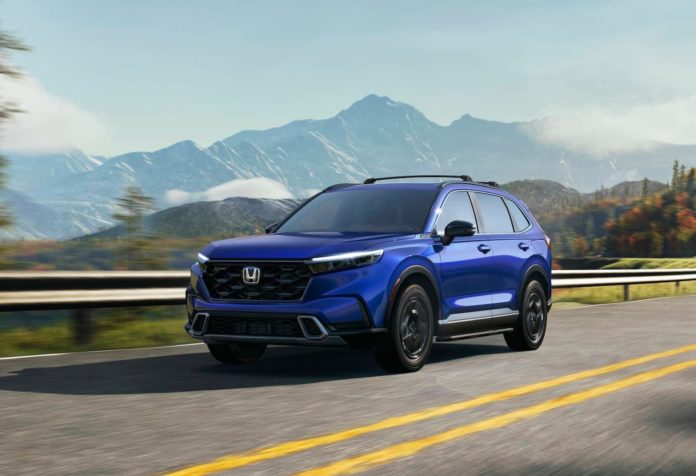About the same time it rolls out its first long-range battery-electric vehicle, Honda plans to come to market with an all-new, hydrogen-powered version of its popular CR-V, the crossover using a fuel-cell system developed as part of a joint venture with General Motors.
While initial sales targets are modest, about 2,000 a year at first, the Japanese automaker hopes to grow demand to as much as 60,000 of the CR-V FCEVs by 2030. The longer-term goal, the carmaker said in a statement, is a “few hundred thousand units per year by the second half of the 2030s.”
“Hydrogen will play a particularly important role in achieving carbon neutrality,” Senior Managing Executive Officer Shinji Aoyama said during a news conference at Honda’s headquarters in Tokyo on Thursday. “With this system, we have been striving for lower costs, high durability and improved low temperature resistance.”
Refillable batteries
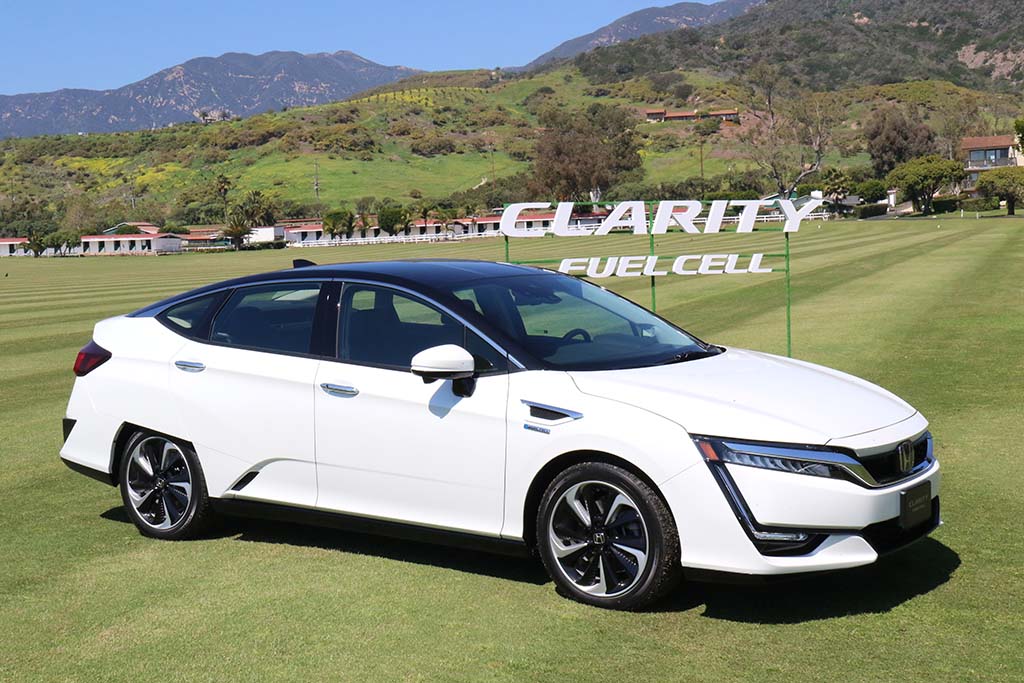
Fuel-cells are sometimes referred to as “refillable batteries,” as they rely on the same electric motors as EVs to power their wheels. But instead of batteries FCEVs use a technology called a fuel-cell stack. At their most basic, these devices combine hydrogen gas and oxygen from the atmosphere in the presence of a catalyst, such as platinum. That strips away electrons used to power the vehicle’s motor drive system. The only exhaust gas, meanwhile, is water vapor.
Honda was an early proponent of fuel-cell technology and introduced the hydrogen-powered Clarity in 2016. But it dropped the sedan at the end of the 2021 model year and was expected to introduce a new version. Instead, it plans to bring back the technology as an option for the CR-V, its most popular product line.
Slashing costs
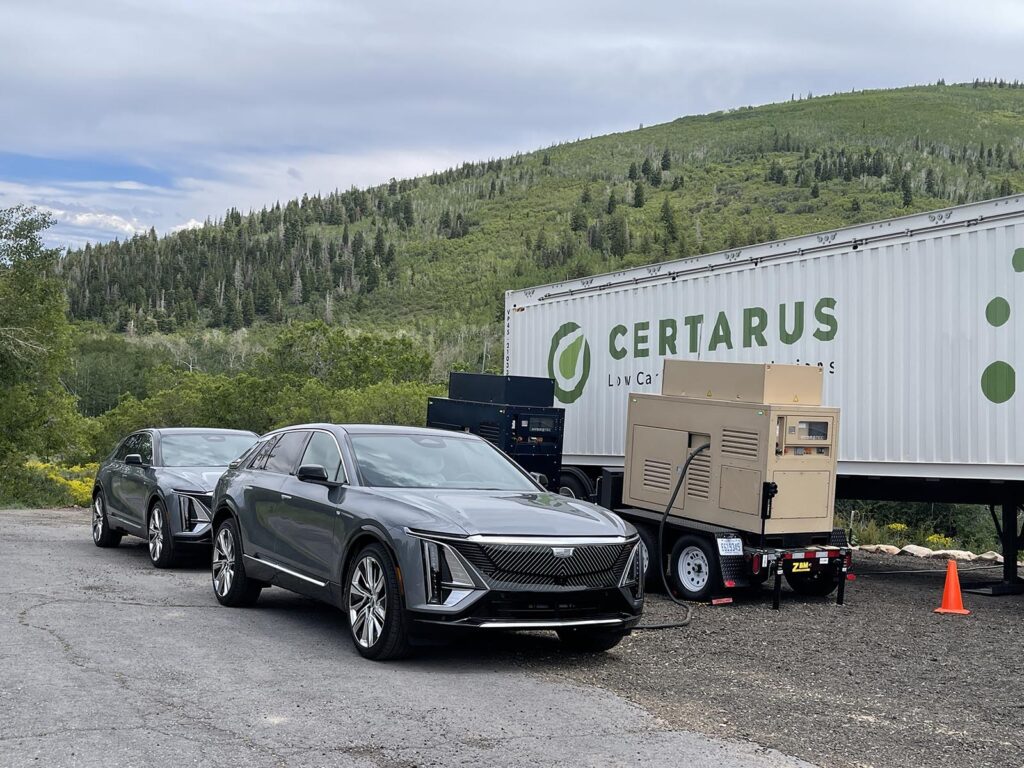
Significantly, the automaker said it has cut the cost of the next-generation fuel-cell system by two-thirds which should make the hydrogen much more affordable than the old Clarity, enhancing its appeal.
“This significant cost reduction was achieved by various measures including the adoption of innovative materials for electrodes, advancement of a cell sealing structure, simplification of the supporting equipment (“balance of plant”) and the improvement of productivity,” Honda said in its statement.
Other advantages
“Moreover, the durability of the system was doubled by the application of corrosion-resistant materials and controlled suppression of deterioration, and low temperature resistance was also increased significantly.”
Proponents of fuel-cell technology point to another plus: the relatively long range that fuel-cell vehicles can offer, typically 300 to 400 miles per tankful of the lightweight gas. And where it can take some electric vehicles an hour or more to charge up, refilling an FCEV can be completed in about the same time it takes to fuel up a gas-powered vehicle.
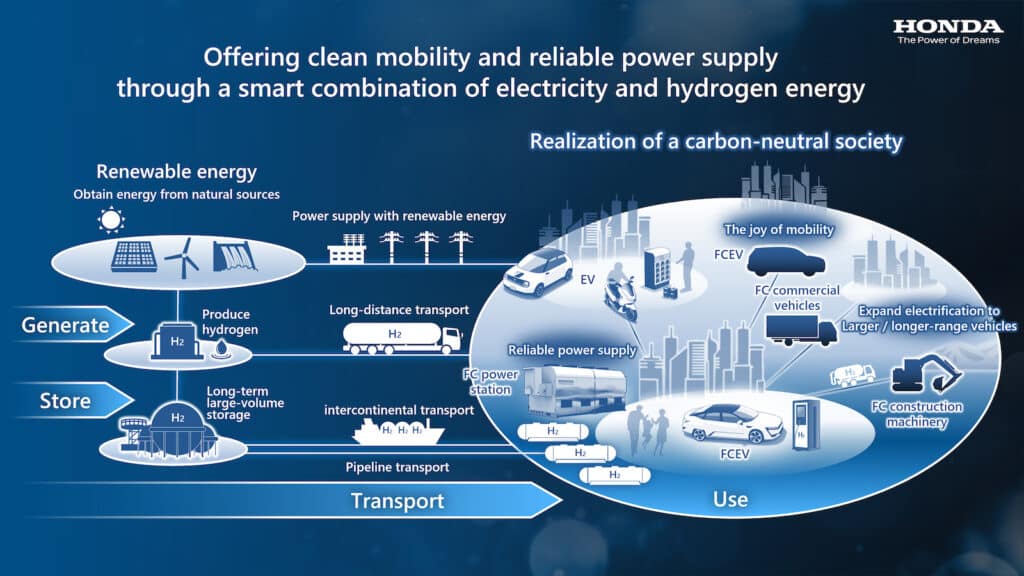
The fuel-cell system going into the CR-V is the long-await product of a Honda-GM joint venture announced in 2013. That partnership has already paid off for the Detroit automaker which has launched a line of hydrogen-powered mobile generators.
An early pioneer
While GM also was an early pioneer of hydrogen technology, it decided to focus on non-automotive applications. Among other things, it is working on ways to use a fuel-cell system to in locomotives to replace conventional diesel-electric drive systems.
Honda is exploring similar earthly options, it said in its statement, while also “envisioning use in outer space.” In fact, fuel-cell technology had its first serious application in the Apollo program, providing electrical power to the manned capsules flying the Earth to the moon and back.
The fuel-cell system for the CR-V will be produced at a plant operated by the Honda-GM joint venture in suburban Detroit. The vehicle itself will be assembled in Marysville, Ohio using a specialty facility original built to handle the Acura NSX. That supercar was recently discontinued.
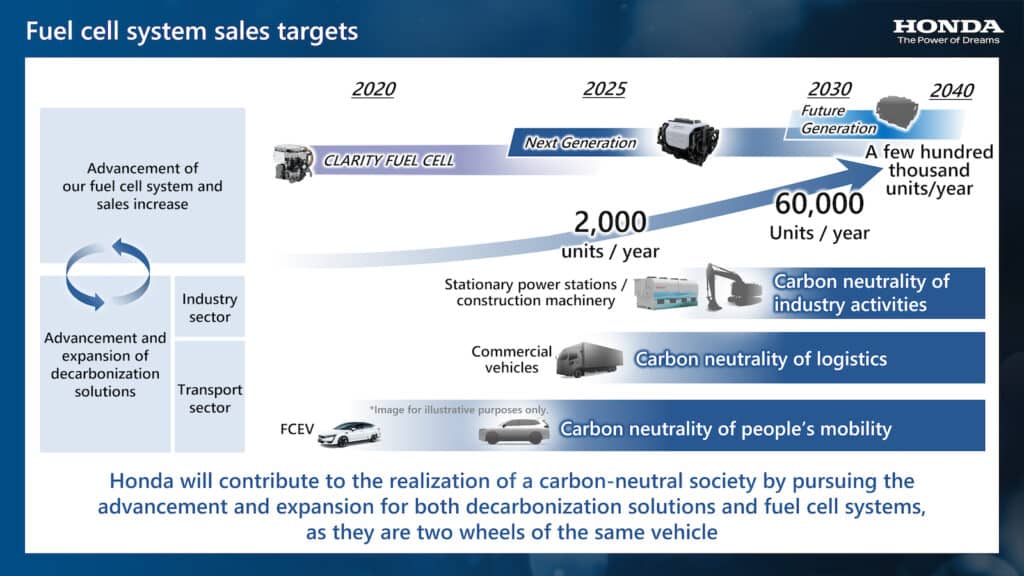
The competition
GM and Honda have a handful of competitors in the fuel-cell space. Both Toyota and Hyundai now offer FCEVs in the U.S. market, though sales are restricted to a handful of areas, mostly in California, where the fuel is available. The lack of a refueling network is seen as one of the biggest challenges to widespread adoption of FCEVs.
Some proponents believe the technology will gain a bigger foothold in the commercial vehicle market where regular routes will make it easier to set up refueling stations.
Toyota and Hyundai both have begun operating prototype fuel-cell trucks out of the Ports of Los Angeles and Long Beach.
Meanwhile, startup Nikola plans to begin delivering its first hydrogen-powered trucks later this year. And it has set up a new subsidiary to create a refueling network.

